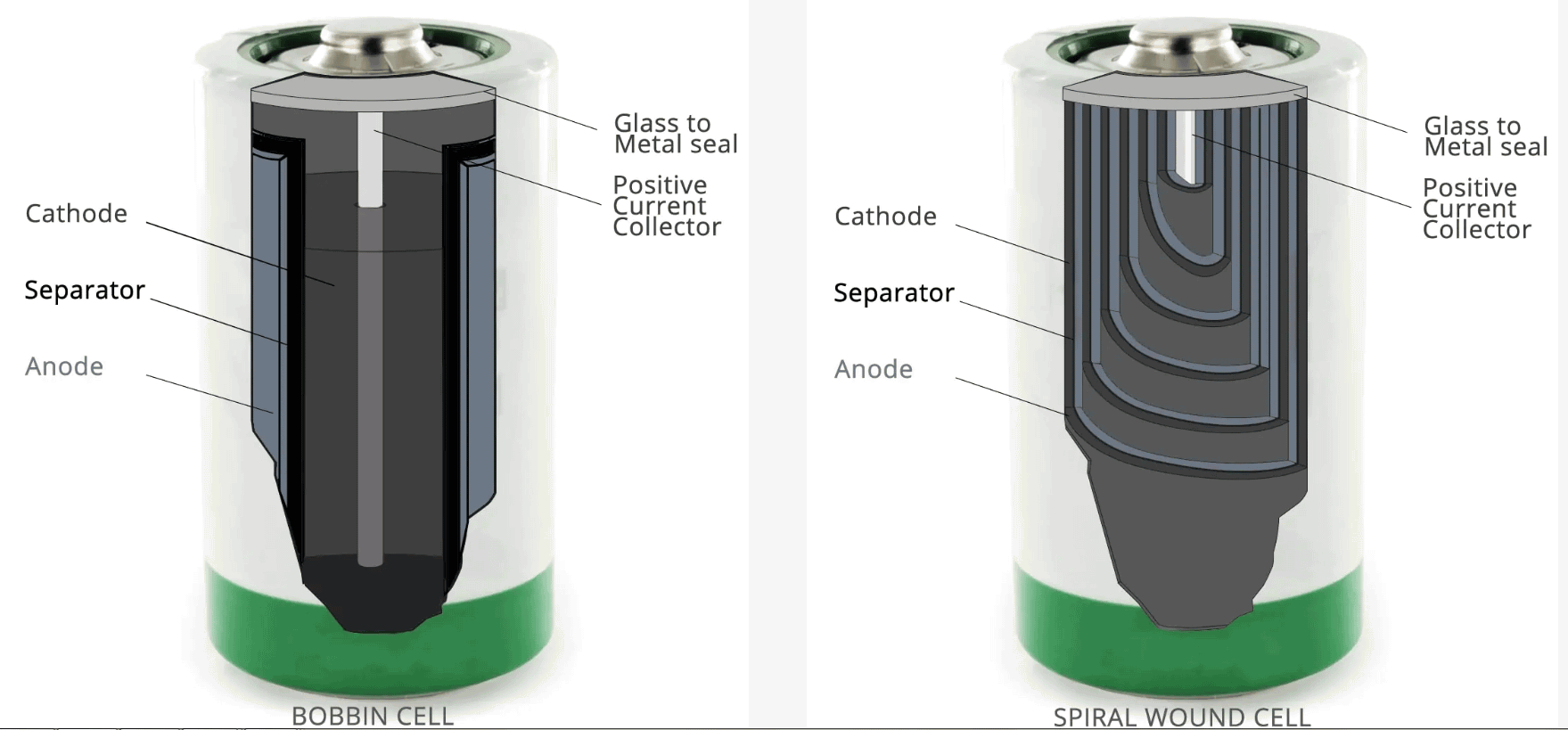Among primary lithium batteries, there is a natural trade-off between two kinds of cells: those designed to work for the long-term with a low usage rate and low-self-discharge; and those offering short-term operation with a higher usage rate but higher self-discharge.
Spiral-wound cells have a large common surface area between the anode and cathode, giving them a high current capability. Bobbin-style cells have less common anode/cathode surface area which limits their discharge rate, but also limits their self-discharge rate. Certain lithium batteries, including lithium thionyl chloride (LiSOCl2) chemistry with spirally wound construction, lithium sulfur dioxide, and lithium manganese dioxide, can deliver energy at a high rate for relatively brief periods. Spirally wound LiSOCl2 cells have electrodes with large surface areas which support higher rates of output. However, the downside of spiral-wound construction is a significantly higher self-discharge rate. By contrast, bobbin-type LiSOCl2 cells feature much less electrode surface area, supporting a lower rate of output along with a lower rate of self-discharge.

A simple analogy between these two types of batteries would be an 8-oz. (capacity) glass of water. Over time, the large opening of the glass allows the water to evaporate faster (higher self-discharge). But the larger opening allows the water to pour out rapidly (higher rate of output). The wider opening serves up energy immediately in applications thirsty for large amounts of energy. However, if you want to keep that water around for an extended period of time, the wider opening becomes problematic, allowing the water to evaporate more quickly.
A bobbin-style LiSOCl2 battery is characterized by a cylinderical cathode surrounded by anode material. This style of battery construction is easy to manufacture, has a low self-discharge rate, ad needs no safety fuse.
Certain bobbin-type LiSOCl2 cells were designed to supply a moderate rate of discharge over a relatively long operating life with a low annual self-discharge rate ranging from 1 to 2% a year. In storage, these batteries would use up approximately 10-20% of their initial capacity over ten years. This performance has analogies to a soda can with a moderate opening — the smaller opening lets the soda evaporate more slowly than from a large glass with the trade-off that the liquid can’ t pour out as fast.
Post time: Oct-27-2023




